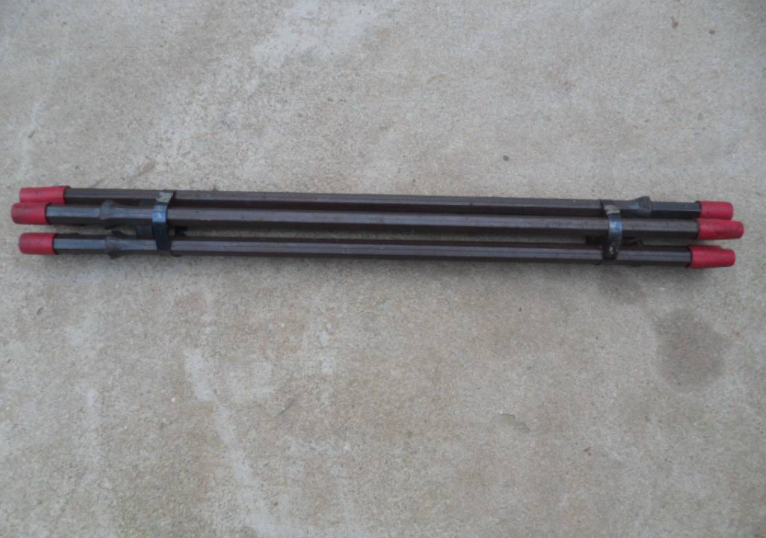Selection of mining drill tools, use and normal maintenance
Related products Link:
1. Choose
1. Selection of mining drill bits
According to the nature of the rock, choose the appropriate cemented carbide mining bit. Generally speaking, for rock with high hardness, the drill bit supplied by alloy with relatively low hardness is selected, and on the contrary, the alloy drill bit with relatively high hardness is selected. For extremely hard rock, if the power of the rock drill is high, the three-blade or cross drill bit can be used. At this time, in order to facilitate the unloading of the drill, the taper hole of the drill bit can be selected at 11° or 12°. For rocks with moderate hardness and good integrity, in order to improve work efficiency and reduce costs, ball-tooth drill bits can be used.
The drill rod should ensure that there is only enough mating surface with the drill bit. In general, the depth of the drill rod inserted into the drill bit should be ≥ 25mm, and the larger the contact surface, the better, and the minimum should not be less than 60%. Therefore, try to choose a drill rod with a taper tip machined by machining. The drill rod used in conjunction with the drill bit should be straight to the naked eye, and the impact end face of the drill tail should be flat.
Whether it is a drill bit or a drill rod, the water hole should be kept unobstructed.
2. Use
When the drill bit and the drill rod are in use, firstly check whether the shank tail of the drill rod is flat, whether the taper tip and the taper hole meet the requirements, whether the cutting edge of the drill bit is damaged, whether the water hole is not unblocked, and whether the air pressure and water pressure are sufficient. etc., it is strictly forbidden for the drill bit to collide with the alloy between the drill bits. When drilling holes, it should be noted that the wind must be light and light, that is, the wind pressure should be drilled with a small amount first, and then the wind pressure can be gradually adjusted to normal after the drilling is stable. When withdrawing the drill, try to reverse the drill, and avoid forcibly knocking and shaking as much as possible, so as not to damage the drill bit or the drill rod, resulting in early scrapping.





